Autism-Open Access
Open Access
ISSN: 2165-7890
ISSN: 2165-7890
Research Article - (2019)Volume 9, Issue 1
Many studies presented autism in children is estimated as one per 62 children and higher levels were reported in some countries. These children exhibit significant impairments with social, behavioural and communication skills. The level of impairments and severity of autism vary from an individual to another which makes teaching children with autism a challenge task for caregivers. Hence, computer mediated educational materials offers an alternative way to attract children to learning tasks using visual illustrations instead of textual form. This paper presents a preliminary study conducted at Right-to-Live autism centre in Gaza, Palestine; it aims to evaluate the children acceptance and attraction level to the served education materials compared to the manual methods of teaching.
Children with autism; Educational games; Intervention; Visual illustrations
Interest in educational games has increased in the last decade and the moving towards the gaming usage as an educational tool in schools, centres and homes [1]. Educational games become a target for educational researchers across the globe, the results and their findings were varying depending on the community’s acceptance and believes in games ability and effectiveness in education [2,3]. Many questions been asked and many researches had been carried out as well in order to define the games as an assistive technology in improving the effective learning environments especially when the targeted environment is children.
Hassan et al. launched a computer game for children with autism the targeted age is between 9 to 14 years old, the easy to play computer game is explaining and illustrating the concept of money and bank notes, it was tested on a sample of 9 autistic children and the results were children were able to understand and recognize the concept of money [4].
Based on autistic’s parents and their experience they preferred a real life stories and scenarios which drove Jain, et al. to present a facial expressions teaching game [5]. Another games was designed to teach emotion recognition by Finkelstein, he found that children with autism who taught by a virtual character or human have a higher level of retention than those with traditional classrooms setups, they could design the games in such a way to keep the child engaged and pay more attention to tutorials and instructions [6].
Real story game was presented as well by Zhang KC to teach children on their daily activities, the study was aiming to stimulate some of the daily activities which they could face on daily basis in order to practice the right behaviour and actions [7]. Autistics experience is making mistakes when doing some activities in a real environment and they could hurt themselves, so the game goal is to simulate some real life situations and stories in order to train the children on how to deal on each situation on the virtual environment. The result was impressive, children we getting trained on the game and tested on the real life activities and they were successful. Another study is carried out by Rajendran and Mitchell by creating an interactive and colourful bubble dialogue game to explore the children writing abilities, the researchers found children were improving on and could match the normal typical developing children in the writing skills [8]. Furthermore, another game was designed aiming to enhance the communication skills of autistics [9].
From exploring the above studies, launching the preliminary study with teachers and the children with autism should feed the research of some essential data which can set out the direction of this research aiming to identify the issues, formulate the problems and set the questions and objectives of this research.
The opportunity to work exclusively with children with autism in RtL centre in Palestine-Gaza for a period of time was very welcomed. It provided the opportunity to evaluate the potential for the current approaches (TEACCH) practiced as interventional approach for children and conducting this study in RtL was very much supported and encouraged. Particularly as all the children involved were from a very different cultural background. The researcher was introduced to the RtL staff and teachers. I was able to explore the environment and classrooms settings. And from a semi structured interview with the teachers they pointed that the RtL centre’s intervention program seeks:
• To develop child’s communication skills, social relationships and self-reliance.
• To develop an environment to accommodate with the child’s weak points.
• To develop child’s co-operation with parents and the surroundings.
• To initiate regular testing and measurement for individual training.
• To establish a systematic and structured education.
• To recognize and identify latent and emerging skills and further development required.
• To introduce behavioural and cognitive treatment.
RtL centre has up-to-date equipment and facilities providing an appropriate education and stimulating environment with a team of caring teachers and support staff. There is a regular program of visiting specialists and experts from abroad who sometimes works with the children alongside the teachers. The school therefore keeps abreast of current and innovative developments in the field of education and autism. During the visit to the centre; the researcher was able to evaluate the potential for implementing an assistive technology designed for children with autism as an interventional method, where a transformation of the manual curriculum which is inspired by TEACCH approach into a computerised materials as a form of learning materials and educational computer games for a faster learning acquisition and intervention process, this solution is been triggered after noticing the children reaction and excitement in the computer lab room.
Preliminary study will be implemented in convenient settings for the targeted environment and are somewhat similar to ones in which the intervention setting takes place [10]. Vescio et al. also stated that the preliminary study attempts to try out research techniques and methods to examine how well they work in practice on the large-scale [11]. De Vos and Kruger stated that preliminary study makes the following valuable attributes to the research [10,12]:
• Orientates the researcher towards his/her research field,
• Helps with collecting more information and identify the problem.
• Helps the researcher to plan the research process
• Helps the researcher to determine the investigation range.
• The researcher can test the conceptual form of the project on a small scale without having to generalise the findings
Figure 1 illustrates the preliminary study flow chart from enrolling the participants to this study such as the children, teacher and progress evaluator; training was given to all participants, which was followed with the experiment session and the real framework practice. Data collection methods and analysis procedures were applied. Next section will introduce the participants in this study and everyone’s role.
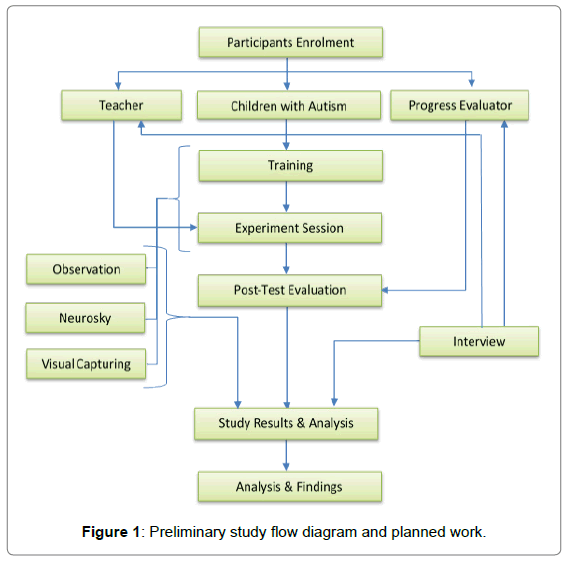
Figure 1: Preliminary study flow diagram and planned work.
Three main types of participants are enrolled to this study. Table 1 show the participants and their roles which are, 2 teachers will be provided with training on the framework and how to use it then they will train the 6 enrolled children on how to use the framework. The six children are all diagnosed with mild autism participants gender is 4 males and 2 females (Table 2). The participants will be using the computer on one-to-one session for 20 min; teachers’ role is to provide the assistance during the sessions if children required so [13].
| Participant | No. | Role |
|---|---|---|
| Children with autism | 6 | The main actor in this study. They will be using the educational game on one-to-one 20 minutes session. |
| Teacher | 2 | Training the children on the computer game usage prior to the actual session for 20 minutes, and provide assistance during the actual sessions |
| Progress Evaluator | 1 | Post-sessions children evaluation. |
Table 1: Study participants and roles.
| CARS Score | (M=31.5) | (M=31.5) | (M=34) | |||
|---|---|---|---|---|---|---|
| Child ID | A | B | C | D | E | F |
| Gender | M | F | M | F | M | M |
| Age | 3Y3M | 3Y7M | 4Y4M | 4Y5M | 5Y2M | 5Y7M |
Table 2: Preliminary study participants’ demographics.
The third and last participant to this study is the progress evaluator who is evaluating the children post to every session ideally. Participants’ demographics are presented in Table 3 and grouped by age and the mean CARS score record which shows that the sample is categorized as mild autism.
| Actor | Data Collection Methods |
|---|---|
| Child | Observation, Visual Recording, Neurosky Mind-set |
| Teacher | Interview |
| Progress Evaluator | Interviews |
Table 3: Data collection methods according to the participant’s role.
The objective of this study is to evaluate the computer mediated materials approach when introduced to children with autism, and collect the data from different sources in order to formulate the plan on how to move forward. Figure 1 and Table 3 are listing down the data collection methods used as per the participant’s role in this study. Observation, visual recording and using the Neurosky Mindset to capture the brain waves while using the computerised material.
Whereas interviews were used for data collection from teachers and progress evaluator.
Moreover, to investigate the effects and the impacts of introducing a computerised activities and games as an assistive method to enhance the children performance in terms of: Verbal and nonverbal communication skills, social skills, and behaviour problems.
Children with autism may experience a range of challenges with the respect to emotions; they may find it not easy to accurately recognize and name their own feelings and may find it confusing to imagine the emotions of others.
The first activity is a social activity in order to build the understandings of feelings and support the emotional regulations as presented in Figure 2. The perspective of the activity is to understand the feelings and the feelings of others, this activity is designed to enhance the social skills and peer relationships for children with autism.
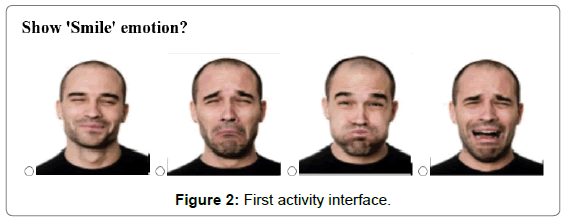
Figure 2: First activity interface.
In this activity the child will be asked to identify the emotion based on the question mentioned, and then child should pick the facial emotion from the multiple choices provided as an answer to the question, this activity has 10 relevant questions to emotions and feelings.
The activity is mainly using certain keywords such as: ‘happy’; ‘sad’; ‘angry’; ‘excited’; ‘mad’; ‘tired’; ‘calm’ and ‘surprised’ the reinforcement of using these words is mainly to engage the child with the word and the expression, the child will be rewarded upon the completion of 10 questions with an encouragement phrase. The children were freely practicing the activity and get used to it.
The second activity is a math activity extracted from the curriculum book of RtL centre, and it is basically aiming to teach children the Count and Add functions. Figure 3 shows the interface of the second activity where children have to count the number of objects and key in the number in the respective box and then practice the Add function by entering the results in to the respective box.
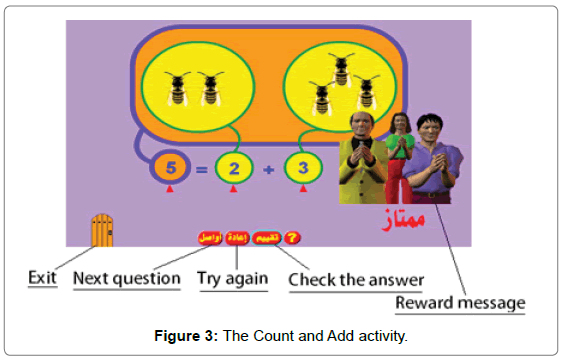
Figure 3: The Count and Add activity.
The objective of the second activity is to gauge the effectiveness of knowledge delivery and children performance when using the computerised materials instead the manual methods (Figure 4).
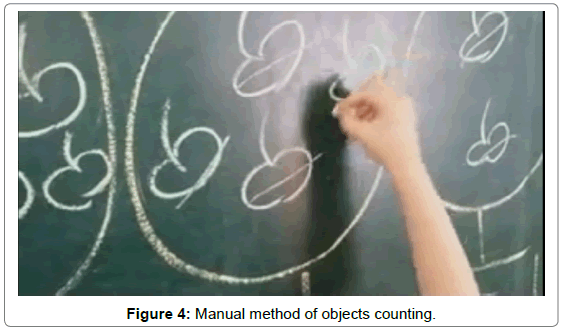
Figure 4: Manual method of objects counting.
The sessions were conducted and administrated by the teachers and the researcher, starting from 20 min training to the one-to-one 20 min sessions for the six children. The Neurosky Mind-set was placed on the child’s head for brain waves retrieval. Next section explains the results analysis of the collected data during the sessions.
From the children behaviour, the children were showing interest towards the computer activities and they were actively engaged with the game comparatively to the manual activities which they were showing a type of laziness and no interest in the activities or the tasks assigned to them. Firm improvements observed on the tasks assigned to the children, however, not all children were able to recognize the emotion on the first activity as well as not all were able to perform the Count and add tasks on the second activity. Table 4 shows the score for every child in both activities.
| ID | Activity 1 (out of 10) | Activity 2 (out of 10) |
|---|---|---|
| Child A | 5 | 6 |
| Child B | 6 | 7 |
| Child C | 4 | 3 |
| Child D | 5 | 4 |
| Child E | 4 | 5 |
| Child F | 5 | 6 |
| Average | 4.8 | 5.2 |
Table 4: Children scores in preliminary study activities.
Child A, B and F have scored more than 50% in both activities, child D scored 50% in the first activity and child C scored less than 50% in both activities. And their overall average in the first activity is 4.8 and in the second activity is 5.2.
Teachers expressed their impression when children are asked to go to the computer classroom, their observation was that the children start the computer games voluntary and without encouragement from anyone. Not like the traditional way where children need lots of encouragements to achieve a certain task. Table 5 lists the observations for the six children during the training and the experimental sessions.
| ID | Observation while using the computer |
|---|---|
| Child A | He was able to use the computer game especially after the given training. He found difficulties in navigating in the game and pointing at the correct answers by hand. |
| Child B | She was attracted to the game after the training session, and she got herself engaged with the game. |
| Child C | He has a fair computer skill, and was trying to exit the game and open up other software. But I managed to expand the game interface on the screen, so he felt forced to use the game. |
| Child D | For the first few minutes from the session, she was tabbing the screen several times pointing at the screen showing what the answer is, afterwards she was able to use the mouse to point at the correct answer with slow motion. |
| Child E | This child was struggling during the training, he was feeling irritated due to the environment settings, after changing the setting to the surrounding objects, he started to respond to the computer and interact with the activities. |
| Child F | He was showing attention to teacher while the training, and then use the activities as per the instructions given in the training. |
Table 5: Children observations record.
The progress evaluator has done the post-session evaluation for the six enrolled children and another six un-enrolled children as an evaluation measurement. The results were showing that the computer activities used in this study have better effects on the children than the traditional approach used in terms of performance and effectiveness, and that achieves the first objective of this study.
A semi structured interview with two teachers who participated to the study, few questions were asked and answers are collected to formulate the overall idea on moving towards the computer solutions as interventional method for children with autism. Table 6 listing the questions and answers which gathered from the interviews. Moreover all teachers highlighted social and communication skills as the main problem faced during the interventional program.
| No. | Question | Answer |
|---|---|---|
| 1 | Do you think children prefer to play with computer? | Both teachers answered by yes, from their observation, the children love to play with computer. The only issue is there is no guidance to lead the children. |
| 2 | Do you think children would prefer to use touch screen device? | Both teachers agreed that children like to play with the touch screen devices, as long as the child can have a bidirectional interaction with the used device. |
| 3 | Do you think computer games will be more effective in the habilitation program? | One teacher is prefer the traditional educational way which currently followed, using physical objects while the other teacher would prefer the computer games or educational materials because from their experience children get involved quickly into computer use. |
| 4 | Do you see the potential for developing computer games/programs to help children? | Both teachers who answered positively on the third question expressed the need to this type of materials as it could help out the children to a faster learning process, the other teacher would not mind but he still prefer the traditional materials. |
Table 6: Interviews results.
The progress evaluator was interviewed by the end of the session after conducting his post-session evaluation; he mentioned that the participated children to this study have better response scores to the evaluation assessment than the other non-participated children. Therefore, these results prove the objectives of this study which are the children performance using a computer as an education medium and skills developer is better compared to the traditional program; however, we can’t defeat the traditional programs totally, whereby it is considered the base interventional process all times.
Other type of data was captured during this study from the Neurosky Mind-set which is attention and meditation levels. Figure 5 presents the average attention and meditation levels over the 20 min sessions refer to appendix A for individual’s statistics for this study.
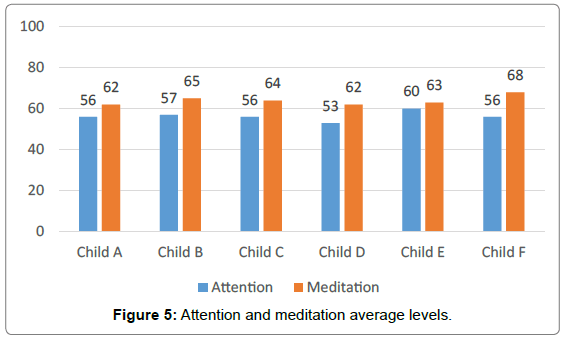
Figure 5: Attention and meditation average levels.
Figure 5 summarizes the levels of attention and meditation for every child over the 20 min session; Child A, B, C, D, E and F were the preliminary study participants and they scored (56%, 62%); (57%, 65%); (56%, 64%); (53%, 62%); (60%, 63%) and (56%, 68%) as attention and meditation levels respectively. And generally attention level is greater than 50% whereas the meditation level is greater than 60% (Figures 6-11).
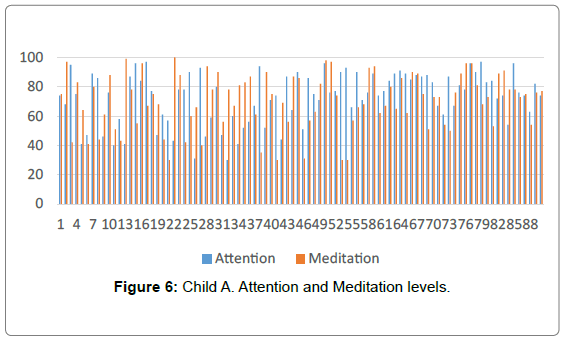
Figure 6: Child A. Attention and Meditation levels.
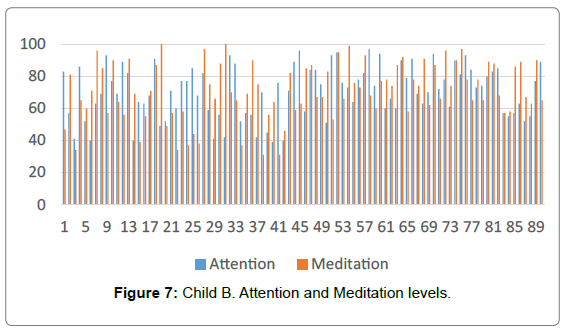
Figure 7: Child B. Attention and Meditation levels.
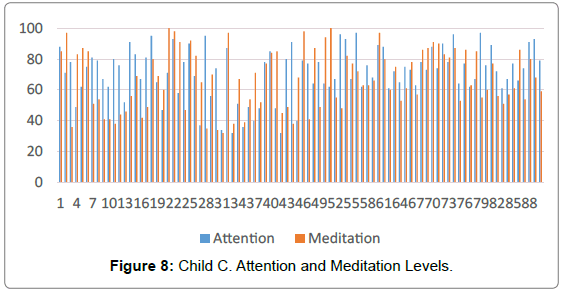
Figure 8: Child C. Attention and Meditation Levels.
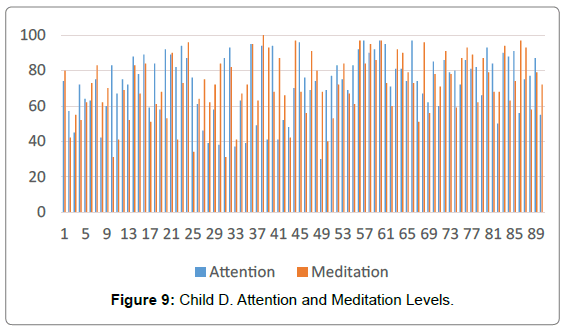
Figure 9: Child D. Attention and Meditation Levels.
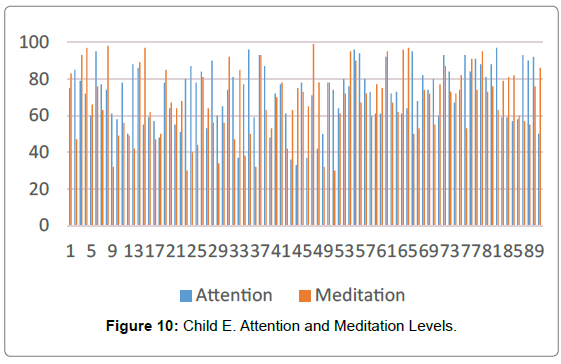
Figure 10: Child E. Attention and Meditation Levels.
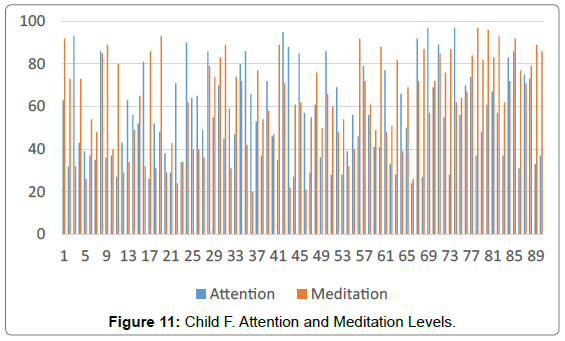
Figure 11: Child F. Attention and Meditation Levels.
Despite the limitation of the sample size of the participants, however, the vast majority of the children were very responsive to the computerised materials and computer activities. There were real delight, shown through facial expressions, laughter and extended vocalisms resulted from the computerised activities used, and eye contact, facial expressions, and keen and sensitive listening were not uncommon. There is clearly considerable scope for developing the many gaming or activities techniques used in communication, socialization and skills improvements. Computer activities can really help to improve their condition and assist in their quality of life. The computer has been proven as a powerful device to help children with autism and teach them new skills if fed with the right educational resources.
Nevertheless, the computer activities found to help the children learn and understand the concept of emotions and social skills and match their ability with the activity. Children with autism find it hard to concentrate for a long period of time, but when they are engaged specially with an attractive colour scheme or animations to grab their attention, they will be motivated and encouraged to excel, this was observed while using the second activity.
Positive and promising results were obtained in this study, that open-up the door for this study to expand and touch other aspects such as the problem-solving, social and collaboration with peers skills, behaviour, and communication skills.
I would like to thank Right-to-Live (RtL) Autism Centre for granting the permission to conduct this study and giving the opportunity to work closely with teachers and progress evaluators to familiarize with the autism population for a much better understanding.
Citation: Ismail K, Jomhari N (2019) A Preliminary Study: Can Computer Mediated Educational Materials Contribute in Children with Autism Progress in the Right-to-Live Autism Centre. Autism-Open Access 9: 236.
Received: 11-Feb-2019 Accepted: 26-Feb-2019 Published: 05-Mar-2019 , DOI: 10.35248/2165-7890.19.9.236
Copyright: © 2019 Ismail K, et al. This is an open-access article distributed under the terms of the Creative Commons Attribution License, which permits unrestricted use, distribution, and reproduction in any medium, provided the original author and source are credited.